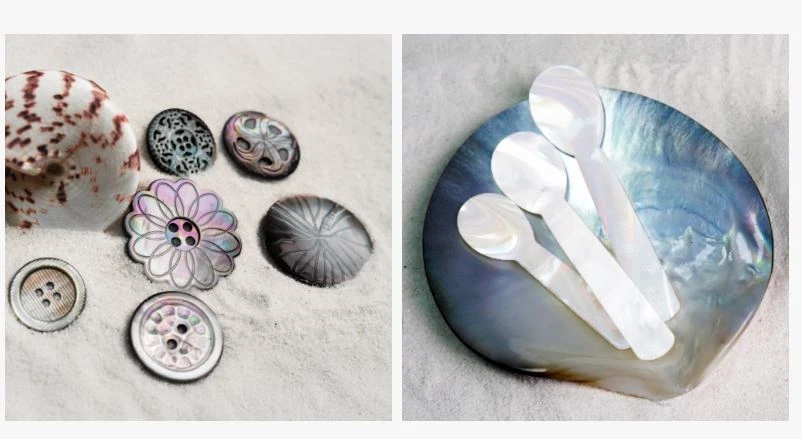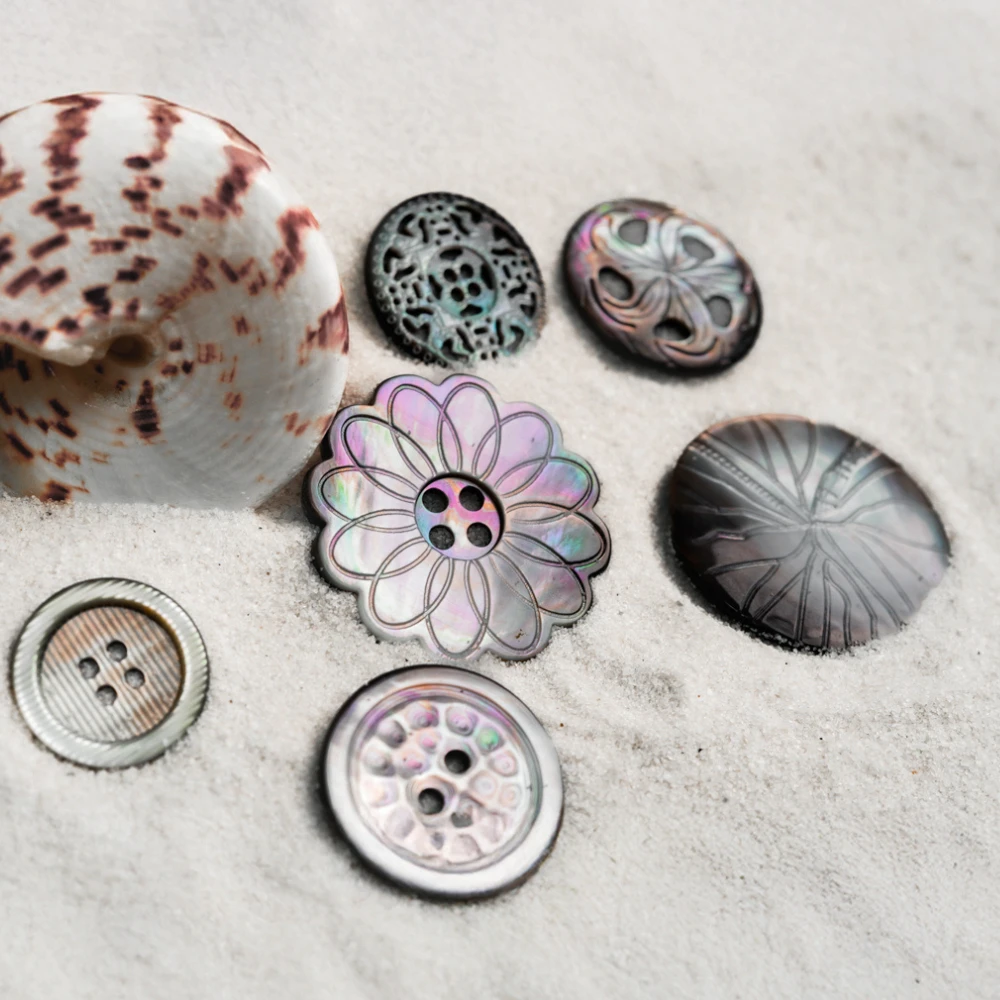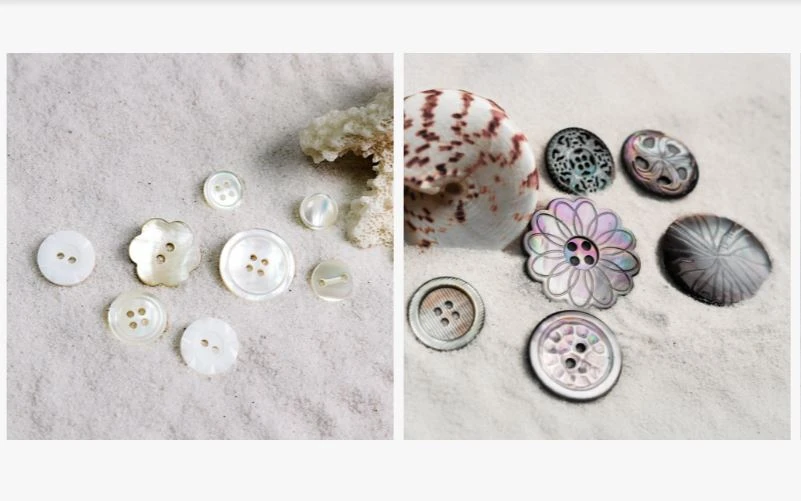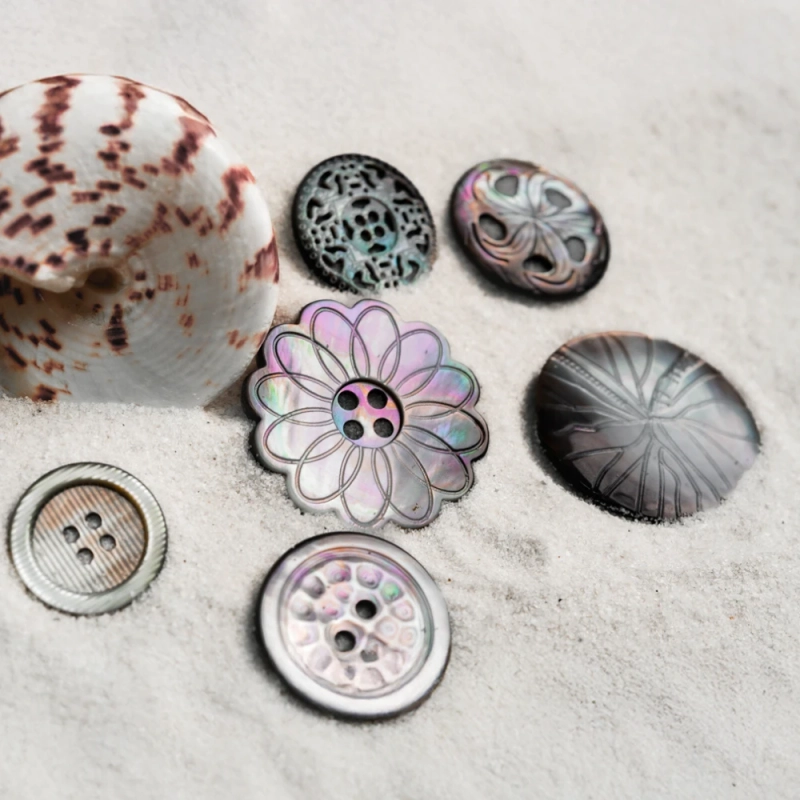When we think about fashion, the spotlight often falls on fabrics, silhouettes, and designers. However, it’s often the finer details, like buttons, that define the craftsmanship and aesthetic of a garment. Among these, the shell button stands out for its beauty, durability, and historical significance. From haute couture to artisanal clothing, the shell button has quietly shaped the narrative of global fashion.

What Are Shell Buttons?
Natural Origins and Materials
Shell buttons are typically made from the inner layer of mollusk shells, such as mother-of-pearl, trochus, abalone, and oyster shells. These buttons are prized for their iridescence, unique patterns, and natural luster, which synthetic alternatives often fail to replicate.
Common Types of Shells Used:
- Mother of Pearl (Nacre): Known for its soft shimmer and strength. Popular in luxury shirts and accessories.
- Trochus Shell: Heavier and often used in outerwear.
- Abalone Shell: Colorful and rare, used in designer garments and limited-edition fashion.
- MOP (Mother of Pearl): Widely used in shirts, blouses, and dresses for its elegance.
Historical Background of Shell Buttons
A Legacy of Centuries
Shell buttons have been used for over 5000 years, dating back to ancient civilizations in China, Mesopotamia, and Egypt. Their popularity soared in 18th and 19th-century Europe, especially in England and France, where they adorned high-end garments, military uniforms, and royal attire.
Industrial Revolution and Global Expansion
With the advent of machinery, shell buttons began to be mass-produced in the 19th century. Muscatine, Iowa, became the "Pearl Button Capital of the World" during the early 20th century, processing tons of Mississippi River mussels for button production.
The Aesthetic Role of Shell Buttons in Fashion

Subtle Luxury
Shell buttons add a layer of refined sophistication to garments. Their iridescent shine changes with light, creating a dynamic visual element that synthetic plastic buttons lack. These buttons are often used in:
- Formal shirts
- Evening gowns
- Luxury blouses
- Designer coats and jackets
Customization and Uniqueness
Each shell button is unique, making it ideal for designers who seek exclusivity and natural variation in their pieces. Their ability to be dyed, engraved, or cut into various shapes makes them versatile for creative expression.
The Functional Advantages of Shell Buttons
Strength and Durability
Shell buttons are not only beautiful but also robust and resistant to breaking under normal wear. They can withstand high temperatures, making them ideal for:
- Dress shirts that undergo frequent washing
- Uniforms that require durability
- High-performance outdoor wear
Lightweight and Comfortable
Despite being made of natural materials, shell buttons are surprisingly lightweight, making them comfortable for everyday wear.
Environmental and Ethical Considerations

A Sustainable Choice
In the era of fast fashion, consumers and brands are seeking eco-friendly alternatives. Shell buttons, being biodegradable and naturally sourced, are a more sustainable option than plastic or resin buttons. Their use supports environmentally responsible fashion.
Byproduct of Food Industry
Many shell buttons are produced from shells discarded by the seafood industry, reducing waste and contributing to a circular economy.
Shell Buttons in Modern Fashion
Revival in Eco-Conscious Fashion Brands
Many sustainable and slow fashion brands are revisiting shell buttons for their eco-credentials and artisanal charm. Brands like Patagonia, Eileen Fisher, and Stella McCartney have incorporated shell buttons in their collections, highlighting their timeless appeal and ethical advantages.
High-End Fashion and Couture
Top-tier designers from Italy, France, and Japan continue to favor shell buttons for their refined, polished look. You’ll often find them on:
- Suits from Brioni or Zegna
- Shirts from Burberry or Armani
- Dresses from Chanel, Dior, and other luxury labels
Shell Buttons in Men’s and Women’s Fashion

In Men’s Fashion
Shell buttons are a hallmark of quality in men’s dress shirts, especially those made from Egyptian or Sea Island cotton. Brands often advertise “genuine mother-of-pearl buttons” as a premium feature, denoting attention to detail and craftsmanship.
In Women’s Fashion
In women's clothing, shell buttons serve both decorative and functional purposes. They are used in:
- Blouses and cardigans
- Dresses with back or side closures
- Decorative front plackets
Differences Between Shell and Plastic Buttons
FeatureShell ButtonsPlastic ButtonsMaterialNatural shellSynthetic polymerAppearanceIridescent, unique patternsUniform, artificial lookDurabilityStrong, wear-resistantVaries, often less durableSustainabilityBiodegradable, eco-friendlyNon-biodegradableCostHigherCheaper
Shell buttons may cost more, but their aesthetic and environmental value far outweighs their price when used in premium garments.
The Process of Making Shell Buttons
1. Shell Collection
Shells are either sourced from coastal regions, seafood industries, or cultivated environments.
2. Cutting and Shaping
Skilled artisans or machines cut the shell into blanks. These are shaped and filed down to specific sizes.
3. Polishing and Drilling
The buttons are then polished to reveal their luster and drilled for stitching.
4. Quality Control
Each button undergoes rigorous checking for cracks, warps, and visual appeal before being packaged for designers and manufacturers.
Custom Shell Buttons for Fashion Labels
Many fashion brands today opt for custom-made shell buttons that include:
- Engraved logos
- Monograms
- Custom shapes and color dyes
This enhances brand identity and provides an additional layer of luxury to the final product.
Trends in Shell Button Usage
Rise in Vintage-Inspired Clothing
As vintage and heritage styles come back in vogue, so does the use of shell buttons. They are now commonly seen in:
- Retro denim jackets
- High-waisted skirts
- 1940s-style blouses
Popularity in Handmade and Artisanal Fashion
Etsy brands and small-batch designers frequently use shell buttons to elevate the perceived value of handmade garments.
Care Tips for Shell Buttons
To maintain their shine and integrity:
- Avoid harsh detergents or bleach
- Wash garments with shell buttons in cold water
- Handwashing or using a laundry bag is recommended
- Polish occasionally with a damp, soft cloth
Challenges in Shell Button Production
Environmental Regulations
Sourcing shells is regulated in many countries to protect marine ecosystems. This can limit supply and increase costs for manufacturers.
Availability of Raw Material
Climate change and overfishing may affect the availability of mollusks, impacting the future sustainability of shell button production.
Labor-Intensive Craft
Making high-quality shell buttons is labor-intensive, requiring skilled artisans, which adds to production time and cost.
The role of shell buttons in the fashion industry is a blend of aesthetic, functionality, and sustainability. These small yet impactful accessories have stood the test of time, from ancient garments to modern couture. As fashion shifts toward responsible sourcing and mindful luxury, shell buttons represent an ideal synergy between nature, craftsmanship, and elegance.
Whether in high-end menswear or artisanal womenswear, shell buttons continue to reflect the values of quality, tradition, and eco-conscious design. For designers, consumers, and brands aiming for timeless fashion with a conscience, shell buttons are not just an option, they are a statement.
CONTACT
Address: 1/474, Hoa Lan 2 Hamlet, Thuan Giao Ward, Thuan An City, Binh Duong Province, Vietnam
Phone: +842743716599
Email: tonvan@hcm.fpt.vn
Website: https://vietnambuttons.com/collections/shell-button



